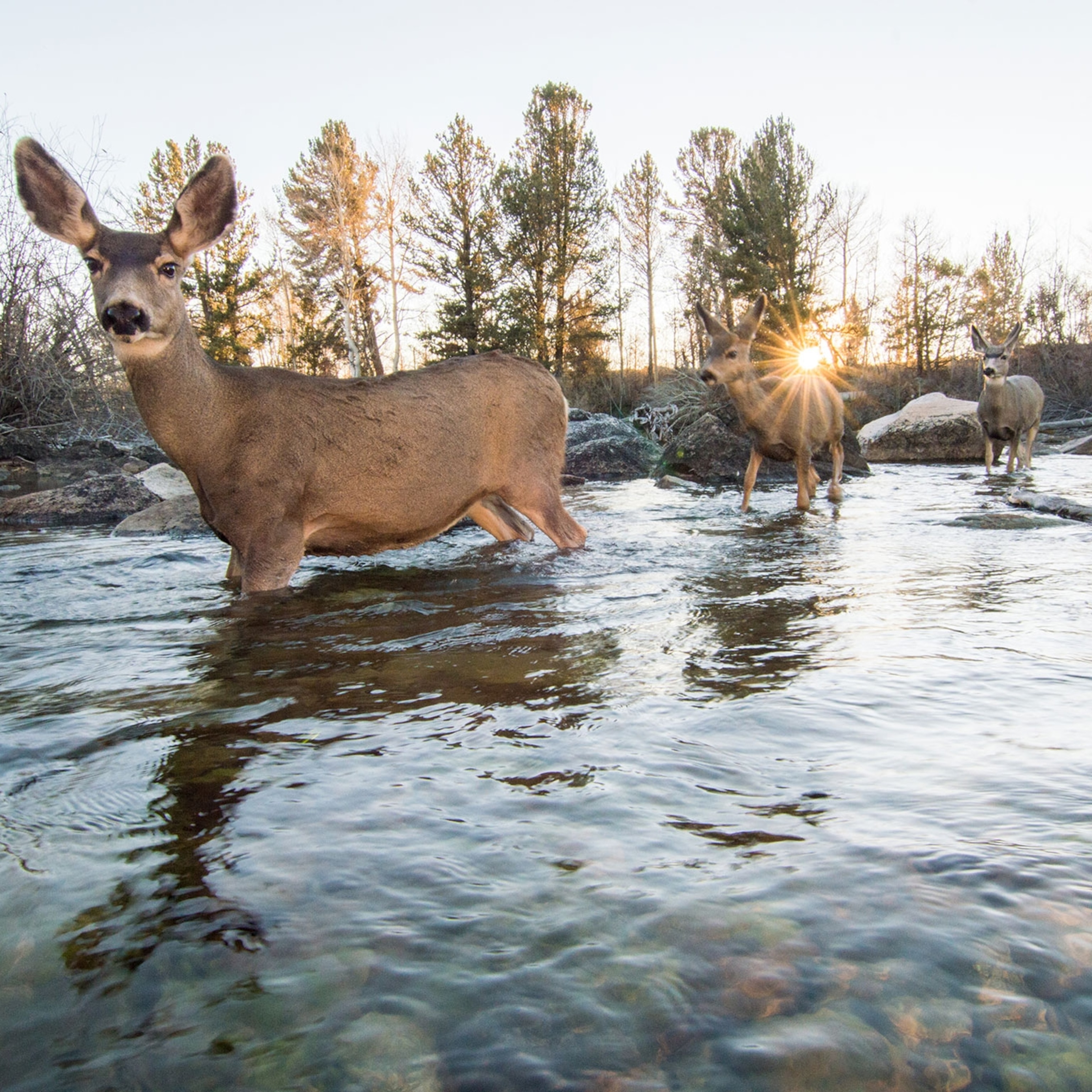Listen to the article:
We think of COVID-19 as a human pandemic, but it is much more than that. The virus that causes the disease, called SARS-CoV-2, can spread to a growing number of wild and domesticated animals.
According to the U.S. Department of Agriculture, the virus has been found in more than 100 domestic cats and dogs as well as captive tigers, lions, gorillas, snow leopards, otters, and spotted hyenas. Zoo workers in the U.S. have found a single positive case in a binturong, coati, cougar, domestic ferret, fishing cat, lynx, mandrill, and squirrel monkey.
The USDA says that only three wild species in the United States—the mink, the mule deer, and the white-tailed deer—have tested positive. In other parts of the world, wild black-tailed marmosets, big hairy armadillos, and a leopard have all been found to have it.
But tests on wild animals aren’t done very often, and new research is starting to show that COVID-19 has probably affected a lot more species than we thought. Joseph Hoyt, a disease ecologist at Virginia Tech, says, “I think the disease has spread to many more wild animals than was thought before.”
How does SARS-CoV-2 get into so many different kinds of animals, and what are the effects?
The link between receptors
A complicated receptor called ACE-2, which is found in all mammals, is a big part of the problem. This receptor is important for controlling blood pressure and other functions of the body.
Once the SARS-CoV-2 spike protein gets into the body, it starts infecting host cells by binding to the ACE-2 receptor, which is found in humans and many other mammals’ upper airways and sinuses.
Craig Wilen, a virologist at Yale University, says that the physical structure of the ACE-2 receptor doesn’t change as much between vertebrate species as it does with other similar proteins. Even so, there are enough small differences that scientists at first thought it was very unlikely that some mammals would get infected.
From lions and tigers to big hairy armadillos, a growing number of animals have been infected with the coronavirus. Here’s what we’ve learned https://t.co/ar3mC1Wynt
— National Geographic (@NatGeo) January 9, 2023
But this idea has changed because animals that were once thought to be less likely to get sick turned out to be anything but. It now looks like many, if not most, ACE-2 receptors in mammals are vulnerable and don’t act as a barrier for the virus.
Rick Bushman, a professor at the University of Pennsylvania School of Medicine who studies how microbes interact with their hosts, says, “It seems good enough, even if it’s not a perfect match.”
Instead, there are probably a lot of other things at play that make people vulnerable, but almost nothing is known about them.
Also read: This week, a rare green comet will pass by Earth.
A vast range
We already know that the virus can infect and spread in wild mink and white-tailed deer, and there is at least one confirmed case of the virus going from humans to the animals and then back to humans for each species. Aside from mink, it looks like domestic ferrets and golden hamsters can also easily pass the virus to each other when they are in the same cage.
In addition to the animals already mentioned, an upcoming study published ahead of print in BioRxiv found probable cases of SARS-CoV-2 infection in wild deer mice, raccoons, opossums, grey squirrels, white-footed mice, striped skunks, and more.
Carla Finkielstein, a co-author of the paper, was surprised when Hoyt and conservation biologist Amanda Goldberg found evidence that Virginia opossums were infected with SARS-CoV-2.
Finkielstein says, “We were worried, because that means it’s jumping” to mammals that are not closely related. “From a biological point of view, opossums are very different from us,” says Goldberg. Opossums are marsupials that give birth to babies about the size of honeybees. The babies stay in their mothers’ pouches and feed from teats. More than 150 million years ago, marsupials became different from placental mammals, which are many common mammals.

They thought that if SARS-CoV-2 could infect opossums, it was likely that it could also infect a huge number of other mammals. In fact, the team did find antibodies against SARS-CoV-2 in a large number of six species of urban wildlife in southwestern Virginia. They also obtained positive PCR hits—which are indicative of but don’t prove infection—in two of these species and in another four others, including red foxes and bobcats.




One Comment
One Ping
Pingback:After a knife attack at the Paris Gare du Nord, the police open fire. - Republic Aeon